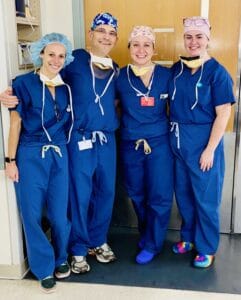For years, the surgical industry has tried to solve the problem of chronic pain and hernia recurrence in inguinal hernia surgery. First came mesh, with its promise of a “tension free” repair and therefore faster recovery and low recurrence. While surgical mesh is safe and effective and hernia recurrence rates did improve, a new problem of Chronic Postoperative Inguinal Pain (CPIP) emerged. Most recently, laparoscopy and robotics became the latest industry fad to promise reduced recurrence, faster recovery and eliminated CPIP. Unfortunately, despite a much more expensive technology and surgery, recurrence rates have largely remained unchanged. While recovery times have improved, rates of CPIP have only been reduced very slightly, and over 24,000 patients each year are still permanently injured by routine inguinal hernia surgery in the US.
Despite overwhelming clinical evidence that inguinal hernia repair is better with posterior mesh placement and avoiding general anesthesia, few surgeons combine these two variables to give patients the best care possible. Some of the hurdles are related to surgeon education about the 3D anatomy of the groin and the best ways to administer local anesthesia, as well as the healthcare industry’s push to utilize new and more expensive equipment.
Last month, the team at Boston Hernia proved that patients really can have it all, by getting an Open Preperitoneal (OPP) repair in a high volume hernia center. By combining the best ways to fix a hernia: avoiding general anesthesia and placing the mesh behind the abdominal wall, Boston Hernia surgeons have demonstrated benefits of their surgery over the more expensive laparoscopic or robotic repairs.
Our paper is the first paper to show that a novel open approach to inguinal hernia (OPP) virtually eliminates all postoperative complications, including CPIP (when performed in high volume centers like ours). Additionally, OPP nearly eliminates the use of postoperative opioids, improves patient quality of life, and significantly reduces the costs of surgery.
It took almost a decade of data collection before obtaining enough data to show meaningful differences between OPP and laparoscopic/robotic procedures. It then took almost a full year of peer review to get this published, largely because it runs counter to what most surgeons and industry currently promote.
The linked article is quite technical, but describes an approach that can help improve postoperative recovery for most inguinal hernia patients while almost eliminating chronic pain.
We feel it is time that surgeons focus on eliminating chronic pain instead of accepting the status quo. Through education, we can impact 24,000 patients’ lives each year.



